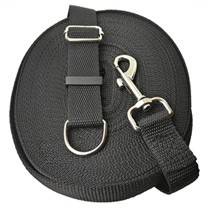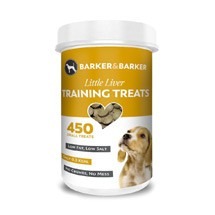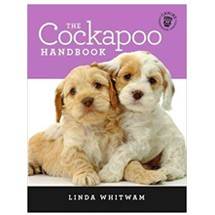We all know that dogs were born to run free. There is nothing like seeing your pooch running flat out, ears flapping in the breeze with a smile stretching across his happy face. It is natural and great to see. Dogs running off the lead are getting wonderful exercise and you can see they are simply loving life.
What if? The fear….
Contents and Quick Navigation
So, can you let your Cockapoo off the lead? We all have that inbuilt fear that when we our new puppy off leash for the first time to go play that they are not going to come back. The embarrassment of shouting and calling with no chance of your dog coming back anytime soon. Frustrating and scary. What if they get hurt? What’s more, you want to make sure your dog will come back to all family members.
To some extent, it will always be a leap of faith the first time you unclip the lead. You know you might have a few uncomfortable moments, but you can prepare for it. Here are a few things to think about.

15m dog recall training lead
- Works up to 100kg
- Adjustable length
- Strong nylon
Read our review

Little Liver Dog Training Treats
- 450 treats!
- Won’t crumble in pocket
- Ideal for puppies
Read our review

Cockapoo Owners Handbook
- Best seller
- Puppies and adults
- An absolute must
Read our review
When is it best age to let your dog off the lead?
If your Cockapoo is a puppy, the younger the better. From the moment you get your new dog to the time he is around the 4 months mark, he will be a needy little youngster. It would cling to your leg if it had hands. When you start puppy training with your dog off the lead, it is very low risk as they are unlikely to run off and will stay close to you.
However, if you left training your little dog until they were 8 to 9 months, you are going to have your work cut out for you. Your young Cockapoo puppy is in discovery mode and is not the best listener.
If you have missed the puppy stage, don’t let it stop you working on getting your pooch comfortable and safe off the lead. You can train your dog at any age. Even an old cockapoo. It may take a lot more effort with a rescue dog, but even then it is still possible
Whatever the circumstances and however old or young your dog is, it is important to proceed slowly and consider the following.
Training and the bond between you.
Training in your yard is the place to start. Training is all about getting your dog to focus off lead. Their eyes need to be on your face. Make it fun. Your dog needs to sit, come and touch your hand when instructed. If these skills are not mastered, wear your running shoes and be ready to chase a tail over hills and far, far away.
Once you are comfortable, progress to a training lead. When you first take that deep breath and let your dog go in a public place, leave the training lead trailing. Much easier to grab if needed as these are 10 metres or so long.
Where do I do this?
It does sound obvious, but the less that is around when you do it, the better. You can find lead free dog parks, lead free beaches, lead free trails and walks, small enclosed fields and relatively deserted spots in the country. Lead free or off-leash dog parks are wonderful in that they are secure. Your bundle of fun cannot get far. In the early days, go during off-peak hours. A multitude of excited animals can be very intimidating for your dog and at the very least will take his focus away from you. The quieter the better until you both get familiar with the routine.
Before you start letting your dog off the lead, you may want to invest in a long lead or long line leash. These can be purchased on Amazon.co.uk and are great to use if you are not feeling comfortable letting him or her off leash yet. It can give some amount of freedom, as your dog runs off, while giving you peace of mind they aren’t going to go too far.
Tips for Recall Training
Ultimately, recall training is one of the most important forms of dog training you can put your four-legged friend through. To help you get it right, we have put together a some concise training tips to executing this training technique effectively so that it’s successful.
As come is normally the word dog owners use for recall, you need to teach your dog to understand what that phrase means and what you expect from him or her when you use it.
- Start in an area where there are no distractions. This will ensure your dog focuses just on you.
When they are coming to you of their own accord, and are a few short feet away from you, say their name and then “come” - Once your dog is with you, give him a lot of praise and make a lot of fuss.
- This is teaching your doggy that coming back when you call him or her is a positive thing.
- You can start to extend the distance you allow your dog to get away from you before using the command over time.
- It is important that you always reward your dog when they return to you. It doesn’t matter how long it took them or anything else.
- Some people choose to use clickers when training their dog. While this is not essential, the additional sound cue that they have to return, can be easy for your dog to associate with the praise and rewards they get for coming back to you.
- Different people use different things to get their dog’s attention and motivate them to come back, such as running away in the opposite direction from them, waving their favourite toy or having high value treats. the key is to make it seem like the best thing ever if they come back to you.
Tasty Treats for Reliable Recall Training
There are some tasty treats that work better than others. Because you want to make a big deal when they come back, it is best to use high value treats rather than low value ones.
This includes:
- Chicken
- Steak
- Sausage
- Cheese
- Their favourite doggy treat
Professional Help
You don’t necessarily have to try training your dog reliable recall on your own. There are usually recall courses and training sessions available in your local area. This will involve working with a dog trainer or behaviourist who can help you to teach your dog to come back, among other things.
The thing to be aware of is that many use different training methods from one another, so find the one you and your dog are most comfortable with.
Personality and breed traits.
The type of dog you have is a key factor in how cautious you are going lead-free. Hounds and terriers are always likely to follow their natural instincts and take off to hunt. Gun dogs, collies and herders are naturally inclined to stay close and wait for your command. Given the fact a cockapoo is a mixture of a cocker spaniel and poodle and prefers to be near you certainly helps. How many times have you had to share your washroom at home with your shadow? Their instinct is to stay with you but we all recognise the playful and exuberant nature. They do have the instinct to chase and seek prey or anything interesting. This is what makes cockapoo training easier than with other breeds.
Whatever your fears, take the time to try and follow the suggested steps because the reward for owner and dog, if your loving dog can run free without worry, is huge. You will both have that wide smile pasted across your face.
Mike is the proud owner of a 7-year-old Cockapoo named Luna. He loves to share stories, tips and information about owning a Cockapoo. With over7 years of experience as an owner, Mike is passionate about helping others own and care for their dog.
Top 5 Popular Cockapoo Products

Ours is 2 tomorrow and runs free on the fields where it’s safe…August time she started walking at the side of us on the side streets but I wouldn’t trust her near the main roads.
My dog Daisy will not come back when it’s time to be back on the lead. Some days are better than others. Some days are just horrendous.
I bought my cocker poo aged two she had had no previous training And was never given treats and had never been away from the property apart from visiting the vet and going by car! She has never been socialised. I take her to puppy classes She is very anxious and jumpy I let her off lead in an enclosed field she comes back when I call and on the word ready sits to have her lead back on BUT in the house when I call her she hides behind the rocking chair or runs out of the room When I stand up she leaves the room I should be very grateful for any suggestions
We have bonded and she wags her tail when I talk to her or when I approach her bed